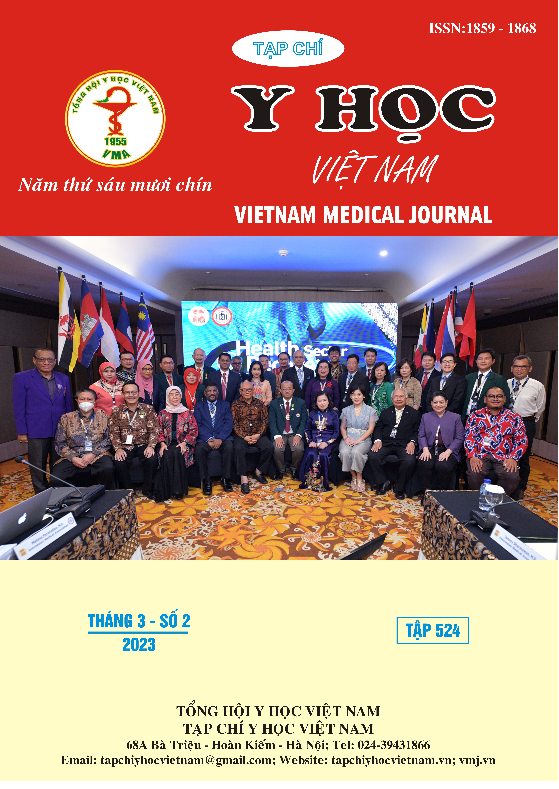INITIALLY EVALUATION OF A REAL-TIME PCR FOR DETECTION OF H. PYLORI ISOLATED FROM THE GASTROENDOSCOPY SAMPLES
Main Article Content
Abstract
Objectives: Design and initially evaluation of a real-time PCR for detection of H. pylori isolated from the clinical samples based on 23S rRNA gene with primers CRF-4 and CRR-1(6). Methods: The specificity of real-time PCR method was evaluated by on: (1) twenty-five strains of non-H. pylori and fungi found in gastroendoscopy samples and (2) one hundred and fifty cultured strains from pediatric gastric antrum samples, which included strains identified as H. pylori and other suspected strains. The coverage of amplified gene fragments was confirmed by sequencing of the 135 bp amplicons from nine strains with differences in staining morphology, colony characteristics and identified biochemical data. Results: The specificity of the PCR assay was confirmed by negative results for microbiota on endoscopy pathway and positive for 150 H. pylori isolated strains. The specificity of this assay was measured by comparing the amplified sequence with 10 strains of Helicobacter species. Results showed that the amplified target gene sequences were similar (97.78% - 99.26%) to the H. pylori sequence retrieved from GenBank. Conclusion: The real-time PCR assay based on the 23S rRNA gene with primers CRF-4 và CRR-1 for H. pylori detection was successfully established with specificity being 100%.
Article Details
Keywords
real-time PCR, 23S rRNA, detection, Helicobacter pylori.
References
2. Andersen, A.P., et al., Growth and morphological transformations of Helicobacter pylori in broth media, J Clin Microbiol, 1997, 35(11):2918-22.
3. Dewhirst, F.E., et al., Discordant 16S and 23S rRNA gene phylogenies for the genus Helicobacter: implications for phylogenetic inference and systematics, J Bacteriol, 2005, 187(17):6106-18.
4. Jones, D. and A. Curry, The genesis of coccal forms of Helicobacter pylori., Springer,1990, 29-37.
5. Kusters, J.G., et al., Pathogenesis of Helicobacter pylori infection, Clin Microbiol Rev., 2006, 19 (3): 449-490.
6. Maeda, S., et al., Helicobacter pylori specific nested PCR assay for the detection of 23S rRNA mutation associated with clarithromycin resistance, Gut, 1998, 43 (3): 317-321.
7. Murray, P.R., et al., Helicobacter, Manual of Clinical Microbiology (12th edition), American Society for Microbiology, 2019, 59 (1): 1044-57.
8. Ndip, R.N., et al., Helicobacter pylori isolates recovered from gastric biopsies of patients with gastro‐duodenal pathologies in Cameroon: current status of antibiogram, Trop Med Int Health, 2008, 13 (6): 848-854.
9. Rimbara, E., M. Sasatsu, and D.Y. Graham, PCR detection of Helicobacter pylori in clinical samples, Methods Mol Biol, 2013, 279-287.


